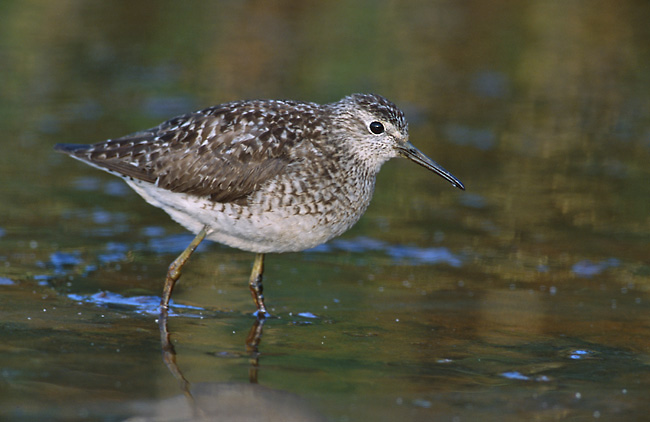|
Wood Sandpiper (Tringa glareola) - Wiki
| 제목: | Wood Sandpiper (Tringa glareola) - Wiki
| |

| 해상도: 650x422
파일크기: 95560 Bytes
촬영일: 2004:11:15 16:05:20
등록시간: 2007:10:02 00:23:08
|
Wood Sandpiper
From Wikipedia, the free encyclopedia
[Photo] Wood Sandpiper (Tringa glareola) in Breeding plumage. Photo by Marek Szczepanek (http://commons.wikimedia.org/wiki/User:Pkuczynski/Marek_Szczepanek) Copyright (C) Marek Szczepanek
Permission is granted to copy, distribute and/or modify this document under the terms of the GNU Free Documentation License, Version 1.2 or any later version published by the Free Software Foundation; with no Invariant Sections, no Front-Cover Texts, and no Back-Cover Texts. A copy of the license is included in the section entitled "GNU Free Documentation License". |
The Wood Sandpiper, Tringa glareola, is a small wader. It is the smallest of the shanks, and breeds in subarctic wetlands from the Scottish Highlands across Europe and Asia. It will nest on the ground, or reuse the old tree nest of another bird, such as the Fieldfare.
It resembles a longer-legged, elegant Green, or Solitary Sandpiper with a short fine bill, brown back and longer yellowish legs. It differs from the first of those species in that the white rump patch is smaller and less contrasting, and Solitary lacks a white rump anyway. Its closest relative, however, is the Common Redshank, and together they share a sister relationship with the Marsh Sandpiper (Pereira & Baker, 2005). These three species are a group of smallish shanks which tend to have red or reddish legs, and in breeding plumage are generally a subdued, light brown above with some darker mottling, with a pattern of somewhat diffuse small brownish spots on the breast and neck.
They migrate to Africa and southern Asia, particularly India. This bird is usually found on fresh water during migration and wintering.
These birds forage by probing in shallow water or on wet mud. They mainly eat insects, and similar small prey.
The Wood Sandpiper is one of the species to which the Agreement on the Conservation of African-Eurasian Migratory Waterbirds (AEWA) applies.
http://en.wikipedia.org/wiki/Wood_Sandpiper
| The text in this page is based on the copyrighted Wikipedia article shown in above URL. It is used under the GNU Free Documentation License. You may redistribute it, verbatim or modified, providing that you comply with the terms of the GFDL. |
|
^o^
동물그림창고 똑똑전화 누리집
^o^
|
|